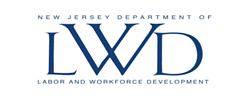PURPOSE
The Passaic County Workforce Development Board, as the Governor’s chosen administrative entity for the Workforce Innovation and Opportunity Act in Passaic County, is authorized to issue interpretations and exceptions as supported by applicable law, rules, and regulations of the Workforce Innovation and Opportunity Act (WIOA).
The purpose of this policy is to provide direction for the implementation of Work-Based Learning (WBL) for WIOA eligible adults, dislocated workers, and youth.
BACKGROUND
Work-Based Learning (WBL) integrates academic learning with real-world application to provide paths to educational and career advancement, while building the talent pipeline. This approach holds great promise for low-income and lower-skilled youth and adults, who all too often lack equitable access to high-quality work-based learning experiences that can serve as steppingstones to increased economic opportunities.
POLICY
The Passaic County Workforce Development Board may implement the following Work-Based Learning programs and services based on the below New Jersey policies and implementation guidance:
WD-PY21-4 offers guidance to local workforce development boards regarding the use of Workforce Innovation and Opportunity Act (WIOA) Title I Adult and Dislocated Worker funds to pay for Incumbent Worker Training.
WD-PY21-3 offers guidance on the New Jersey Local Workforce Development Boards (WDBs) investment of WIOA Title I funds in OJT opportunities. The investment of funds should be driven by WDBs’ strategic priorities, high priority occupations and related targeted industry clusters, and the skills requirements of local employers with an unmet workforce need.
NJWIN 9-16, Change 1(A) provides guidance to local Workforce Development Boards regarding the use of Workforce Innovation and Opportunity Act (WIOA) Title I Adult and Dislocated Worker funds to pay for incumbent worker training.
NJWIN 1-17(Y) provides local workforce development areas with guidance related to work experience for youth under the Workforce Innovation and Opportunity Act (WIOA), including the use of incentives and stipends.
TEGL 19-16 provides guidance to the workforce system on delivering services under WIOA’s Adult and Dislocated Worker programs and the Wagner-Peyser Act Employment Services (ES), as amended by title III of WIOA, and for Implementation of the WIOA final rules.
https://www.nj.gov/labor/wioa/forms_pdfs/ExploringWorkBasedLearning.pdf
Types of Acceptable Work-Based Learning Opportunities:
Work Experience
Work experiences or internships are planned, structured learning experiences that take place in a workplace for a limited period. As provided in 20 CFR § 664.470, work experiences may be paid or unpaid, as appropriate, and consistent with other laws. Work experiences may be within the private for-profit sector, the non-profit sector, or the public sector. Work experiences may also include:
-
Pre-apprenticeship programs
-
Summer employment and other employment activities available throughout the school year.
-
Internships and job shadowing; and
-
On-the-Job Training
According to 20 CFR § 681.590, local youth programs must expend not less than 20 percent of the funds allocated to them to provide ISY and OSY with paid and unpaid work experiences that fall under the categories listed in 20 CFR § 681.460(a)(3) and further defined in 20 CFR § 681.600.
Target populations – Youth and adults with barriers to employment and limited labor experience, dislocated workers needing exposure to new in-demand industries/occupations, unemployed/underemployed works, and other populations determined appropriate by an employment counselor.
Pre-Apprenticeship
Pre-apprenticeship is a program designed to prepare individuals to enter and succeed in a Registered Apprenticeship program. A pre-apprenticeship program must include the following elements:
-
Training and curriculum that aligns with the skill needs of employers in the economy of the state or region involved.
-
Access to educational and career counseling and other supportive services, directly or indirectly.
-
Hands-on, meaningful learning that is connected to education and training activities, such as exploring career options and understanding how the skills acquired through coursework can be applied to a future career.
-
Opportunities to attain at least one industry-recognized credential; and
-
A partnership with one or more Registered Apprenticeship program that assists in placing individuals who complete the pre-apprenticeship.
Target Populations – Youth and adults with barriers to employment who are identified to need certain skills or credentials to successfully enter into a registered apprenticeship program, dislocated workers transitioning to new industries or occupations in need of new skills, other eligible individuals identified by case managers as likely to succeed and have an interest in registered apprenticeship programs.
Apprenticeship
Apprenticeship is an employer-driven, “earn while you learn” model that combines on-the-job training (OJT) with job-related instruction in curricula tied to the attainment of industry-recognized skills standards. The employer typically provides OJT only, but in some cases may also provide RTI. WIOA funds may be used to support the classroom instruction as well as the OJT component. WIOA funds may also be used to provide supportive services to participants that help them succeed in apprenticeship programs.
NJ DOL recognizes two types of apprenticeship programs:
-
Registered Apprenticeship Programs (RAPs), and
-
Industry Recognized Apprenticeship Programs (IRAPs)
A key distinction between RAPs and IRAPS relates to the state list of Eligible Training Providers (ETPs), as WIOA grants RAPs automatic eligibility for the ETP list and exempts RAPs from ETP reporting requirements. IRAPs are not automatically eligible and may be added to state ETP lists by following the application procedures that all other providers must follow.
Target Populations – Adults and youth with barriers to employment and dislocated workers.
Transitional Jobs
For adult and dislocated workers, transitional jobs are a type of work experience, as described in 20 CFR § 680.190 and 680.195 and are considered an individualized career service.
A transitional job is one that provides a time-limited work experience, that is wage-paid and subsidized, and is in the public, private, or non-profit sectors for those individuals with barriers to employment who are chronically unemployed or have an inconsistent work history, as determined by the local WDB. These jobs are designed to enable an individual to establish a work history, demonstrate work success in an employee/employer relationship, and develop the skills that lead to unsubsidized employment (20 CFR § 680.190).
The local area may use up to 10 percent of their combined total of adult and Dislocated Worker allocations for transitional jobs as described in 20 CFR § 680.190. Transitional jobs must be combined with comprehensive career services (see § 680.150) and supportive services (see § 680.900).
Target Populations – Adults and dislocated workers with barriers to employment who are chronically unemployed or have an inconsistent work history.
On-the-Job Training (OJT)
OJT is training by an employer that is provided to a paid participant while they are engaged in productive work in a job that:
-
Provides knowledge or skills essential to the full and adequate performance of the job.
-
Provides reimbursement to the employer of up to 50% (in certain circumstances up to 75%) of the wage rate of the participant for the extraordinary costs of providing training and additional supervision related to training; and
-
Is limited in duration to the occupation for which the participant is being trained, considering the
content of the training, the prior work experience of the participant, and the service strategy of the participant, as appropriate.
OJT training can assist employers who are looking to expand their businesses and who need additional staff trained with specialized skills.
Target Populations – Adults and dislocated workers in need of new employer-based skills, individuals with barriers to employment including unemployed workers (including long-term unemployed), underemployed workers, and older/out-school-youth.
Incumbent Worker Training (IWT)
IWT is designed to meet the needs of an employer or group of employers to retain a skilled workforce or avert layoffs. IWT must:
-
Increase the competitiveness of the employee or employer.
-
Be carried out by the local board in conjunction with an employer or group of employers (which may include employers in partnership with other entities for the purposes of delivering training). employer.
-
Be designed to meet the special requirements of an employer (or group of employers as described above) to retain a skilled workforce or avert layoffs by assisting the workers in obtaining skill necessary to retain employment.
-
Be consistent with state and local plans, as well as with career pathway and sector strategy approaches for in-demand occupations.
Unlike other trainings, employers, instead of individuals, must meet the local eligibility criteria to receive funds for training their workforce. In most circumstances, incumbent workers being trained must have been employed with the company for at least six months. Employers who receive these funds are required to meet requirements for providing the non-federal share of the cost of the training.
Local boards may use up to 20 percent of their adult and Dislocated Worker funds to pay the federal share of the cost of Incumbent Worker Training, enabling current workers/apprentices to remain on the job while in training, which is strongly emphasized in WIOA.
Target Populations – Employers who need to provide training to workers to meet new or changing business needs.
Customized Training
Customized training is designed to meet the specific requirements of an employer or group of employers with the commitment that the business or businesses employ an individual(s) upon successful completion of the training. In addition, customized training is conducted with a commitment by the employer to employ, or in the case of incumbent workers, continue to employ, an individual on successful completion of the training; and paid at least 50 percent by the employer as determined by the Local Workforce Development Board. (WIA sec. 101(8).)
Target Populations – Adults and dislocated workers with barriers to employment needing industry or occupational skills, unemployed workers (including long-term unemployed), underemployed workers, and employed workers.
REFERENCES
-
WD-PY21-3 & WD-PY21-4
-
TEGL 19-16
-
NJWIN 9-16
-
NJWIN 1-17 (Y)





